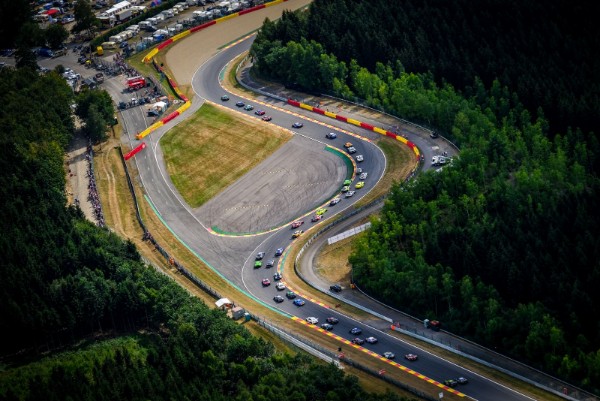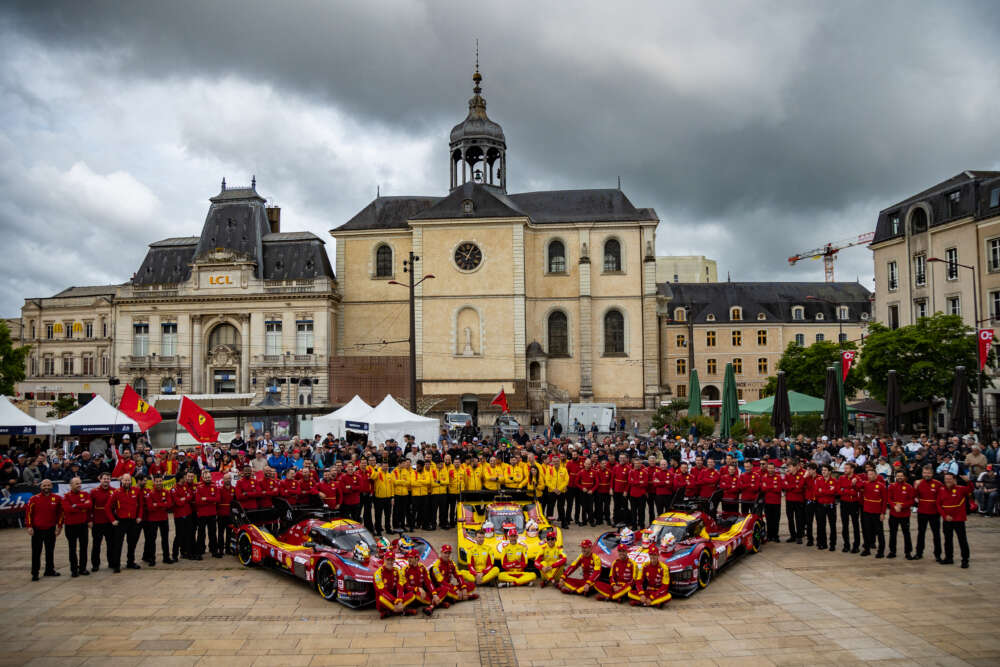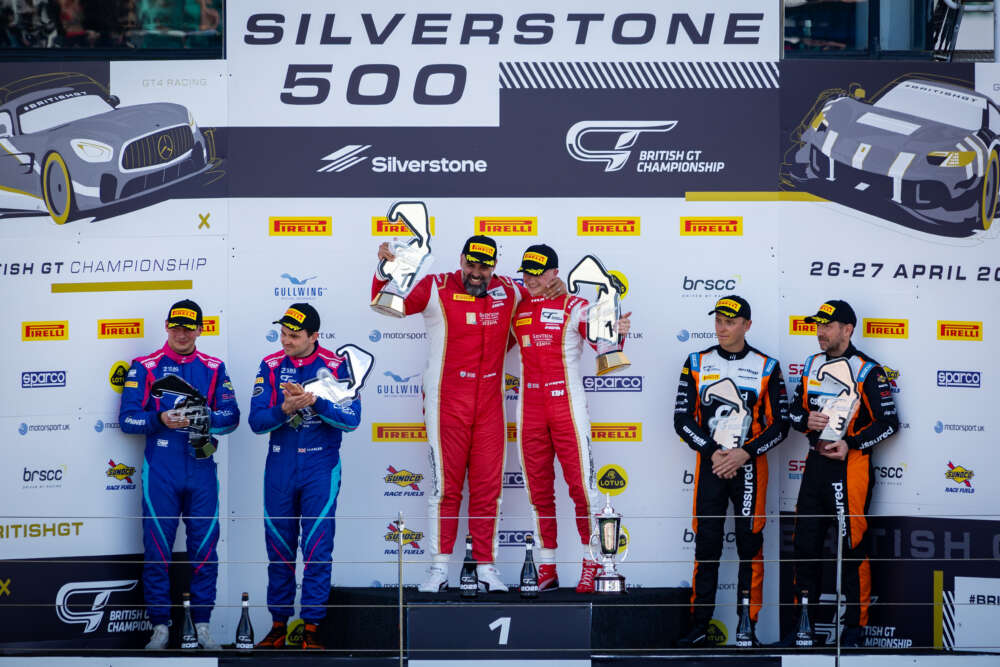
It is said that taking overall victory at the Total 24 Hours of Spa is the toughest task in GT racing. But there is one group of people who might disagree: the winners of the race’s ultra-competitive class battles.
Spa has been a multi-class race since its inception. At the inaugural running in 1924 it was engine size that decided which category you competed in at the daunting 15km Ardennes track. By the nineteen-fifties the event catered for both sports and touring cars, with class trophies awarded for each. And during the nineteen-eighties, with the race firmly established as a touring car contest, class distinctions were again dependent on engine capacity.
When the event switched to GT rules in 2001, the car’s engine continued to define its class. That year there were categories for FIA GT and N-GT machinery, national GT cars, and single-make machines. To add a little extra confusion to exactly what those classes meant, three of them were won by different versions of the same car: the Porsche 996.
The creation of the Blancpain GT Series in 2011 has largely ended any such complications. Indeed, since 2012 the race has been a contest for GT3 machinery only, with a handful of GT3 Cup cars joining on occasion.
The classes still exist, but they are now governed by the grading of the drivers, leading to the current line-up of Pro, Silver Cup, Pro-Am and Am Cup. Put simply, the car that qualifies on pole for this year’s race is theoretically no faster than the car that takes up the final grid slot. That was certainly not the case in 1924!
Many drivers – be they professional or amateur – describe this as the biggest challenge at the Total 24 Hours of Spa. In most multi-class races there a significant speed variations between cars; indeed, this was the case at Spa just 10 years ago.
Now, every car competes within a narrow performance range. That makes negotiating traffic extremely difficult and also adds major complications when plotting strategy.
In the nine years since the Total 24 Hours of Spa became part of the Blancpain GT Series, five different classes have competed alongside the top-tier category (often referred to as the “Pro” class). Of those, two have been in place for the duration: Pro-Am and Am Cup.
In 2011, the GT3 machinery was joined by a GT4 class, with the #63 RJN Nissan taking the win. 2011 and 2012 also saw a GT3 Cup class contested by six crews, all of them running the Porsche 997. After a three-year absence, this category returned between 2016 and 2018 as Group National. The Silver Cup was added in 2018 as part of the Blancpain GT Series Endurance Cup. Grids are booming and it looks set to be a long-term fixture in the Ardennes.
In 2019, the class structure is straightforward. Cars competing as Pro entries are chasing the overall win, with no individual class honours up for grabs. In the Silver Cup, Pro-Am and Am Cup categories, entrants run for class glory and can also compete for overall positions.
Pro-Am has been in place since 2011 and is part of the DNA of the modern Total 24 Hours of Spa. Indeed, during the early years of the Blancpain GT Series it was the biggest class at the race by some distance. It allows a maximum line-up of two Platinum and two Bronze-graded drivers. There must be a Bronze driver behind the wheel for at least eight hours across the full race, and at least one hour during each six-hour period from the start.
As such, it tends to be the most complicated category. Sometimes a professional is at the wheel and therefore able to run with the overall leaders; at other stages, an amateur competitor is in control and the pace will drop. At any given moment, the leaders in the class could have totally different categories of drivers in their cars, meaning the advantage can swing back and forth quite dramatically.
Pro-Am was dominant during the early years of the Blancpain GT Series. In 2012, an incredible 39 cars contested the Total 24 Hours of Spa, making it the biggest class by some distance. Indeed, it was not until 2016 that the Pro category overtook Pro-Am in terms of numbers.
During this time, the class was ruled by Ferrari machinery. The Italian brand’s 458 Italia took Pro-Am honours five years running between 2011 and 2015, with Sofrev ASP securing the first and AF Corse then bagging four in a row. After a two-year break during which Porsche and Mercedes-AMG equipment triumphed, it was a Ferrari 488 that conquered Pro-Am once again last year.
With mighty numbers, the Pro-Am cars were able to take some seriously impressive overall finishes. The peak was in 2015, when the winning #47 AF Corse Ferrari came home fourth overall. This was not a one-off: the Pro-Am winner had finished among the top-six at each of the previous four races.
Today, with significantly stronger Pro entry lists, a similar result seems very unlikely. Last year’s Pro-Am winner came home 15th overall, a very solid result given the depth of the field. Indeed, this was better than the winning Silver Cup car.
That was a significant achievement, because in theory an all-silver crew should be a faster than a combination of amateurs and professionals. As the name suggests, each Silver Cup line-up consists entirely of silver-graded drivers. Most are aspiring professionals, while a handful are very experienced amateur racers who have developed beyond bronze status.
2018 marked the first appearance for the class at the Total 24 Hours of Spa, and it produced a classic finish. By the closing stages the #12 Ombra Racing Lamborghini had led for several hours, but the #78 Barwell Motorsport Lamborghini was catching fast.
The Ombra machine had to withstand huge pressure to secure victory, including a bold final-lap effort by the Barwell car at La Source. It was the closest finish of the race by some distance and completed a spectacular debut for the Silver Cup category.
This was in stark contrast to the Am Cup battle, where the winning #77 Barwell Lamborghini came home a dominant five laps clear of its nearest contender.
Another ever-present since the launch of the Blancpain GT Series, the Am class was known as the Gentleman Trophy between 2011 and 2014. At the Total 24 Hours of Spa, the usual all-bronze crew seen at Endurance Cup races can be joined by one silver-graded driver. Significant emphasis remains on the amateurs, with the silver limited to six hours running during the race and for a maximum of two hours in each six-hour period.
Am Cup has seen a more even spread of winning machines than Pro-Am, though Ferrari equipment has still secured the bulk of victories. The Italian marque has triumphed on four occasions, while Porsche’s 997 GT3 Cup car has accounted for two wins. Audi and Lamborghini machinery complete the Am Cup roll of honour.
Multi-class racing is part of what makes the Total 24 Hours of Spa special. While the action at the front of the field tends to attract most attention, it is always worth keeping an eye on who has the upper hand in each battle.
This year’s race could feature a record-breaking entry list. If that proves to be the case, significant numbers can be expected to come from the Pro-Am, Silver Cup and Am Cup ranks. What we can say for certain is that each class will be just as fiercely contested as the overall victory.
Source. SRO Motorsport Group






















